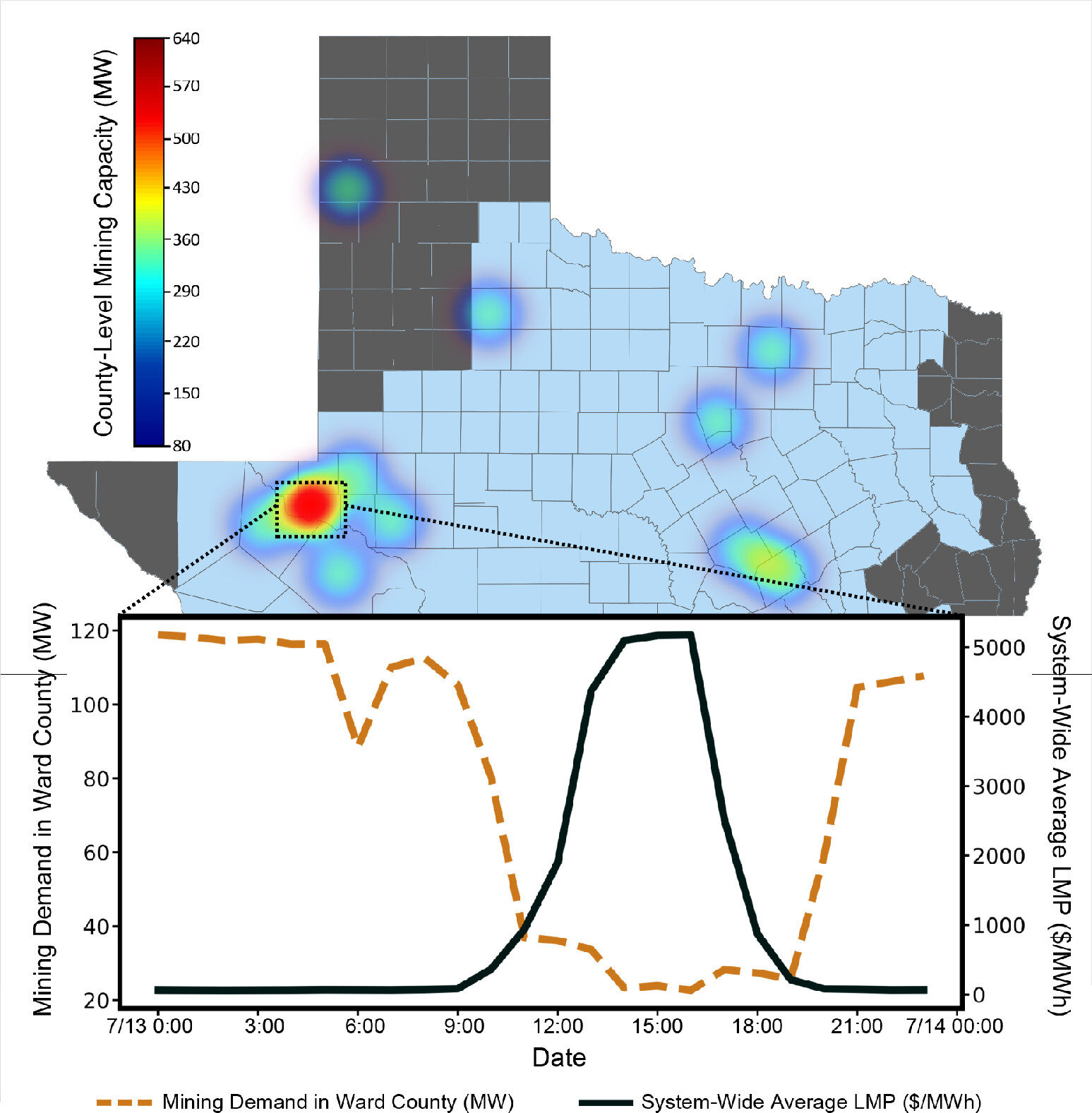Cryptocurrency mining has become increasingly popular in recent years, but little attention has been paid to the environmental impact of this activity. Estimates suggest that the global electricity usage for cryptocurrency assets like Bitcoin is between 120 and 240 billion kilowatt-hours per year, which is more than what some countries like Argentina and Australia use in an entire year. The United States leads these numbers. The high energy consumption associated with cryptocurrency mining has prompted researchers like Dr. Le Xie, a professor in the Department of Electrical and Computer Engineering at Texas A&M University, to study the impact of these activities on the power grid and energy consumption.
Impact on Grid Reliability and Wholesale Electricity Prices
In an effort to gain a better understanding of how cryptocurrency mining impacts the power grid, Dr. Xie and his team conducted a study during the summer heatwave of 2022 in Texas. The study found an 18% reduction in worldwide cryptocurrency mining, which was linked to the stress on the Texas power grid. The Electric Reliability Council of Texas issued a request for energy consumers to conserve energy during this time. Dr. Xie’s research shows that there is a negative correlation between the mining demand and the systemwide total net demand. When the grid is stressed, crypto miners shut down, which demonstrates a potential for demand flexibility. Compared to other types of firm demand, cryptocurrency mining demand has good potential for providing flexibilities during times when peak energy usage in other areas is vital.
In a move to provide a first step into studying mining facilities’ carbon footprint and the impact on grid reliability and wholesale electricity prices, Dr. Xie and his students provide data in their papers published in the March issue of the IEEE Transactions on Energy Markets, Policy and Regulation and the June issue of Advances in Applied Energy. Their research shows that crypto mining can be modeled as a flexible load that can be turned off during stressed moments, making it a positive contributor to the grid reliability.
Sustainable Grid Operation
The Blockchain and Energy Research Consortium at Texas A&M, which is a collaboration between a team of Texas A&M researchers and industry partners, is led by Dr. Xie. The Consortium’s mission is to provide an unbiased multidisciplinary resource to communicate recent developments in the intersection of blockchain and energy. Increasing energy usage will be critical as the emerging industry for transactions continues to advance. Dr. Xie is continuing his research to find a solution that helps take advantage of blockchain-enabled technologies while ensuring a sustainable grid operation.
Dr. Xie’s research shows that cryptocurrency mining can impact the power grid and energy consumption. However, with further research and education, policymakers can ensure a sustainable grid operation while taking advantage of blockchain-enabled technologies.



Leave a Reply